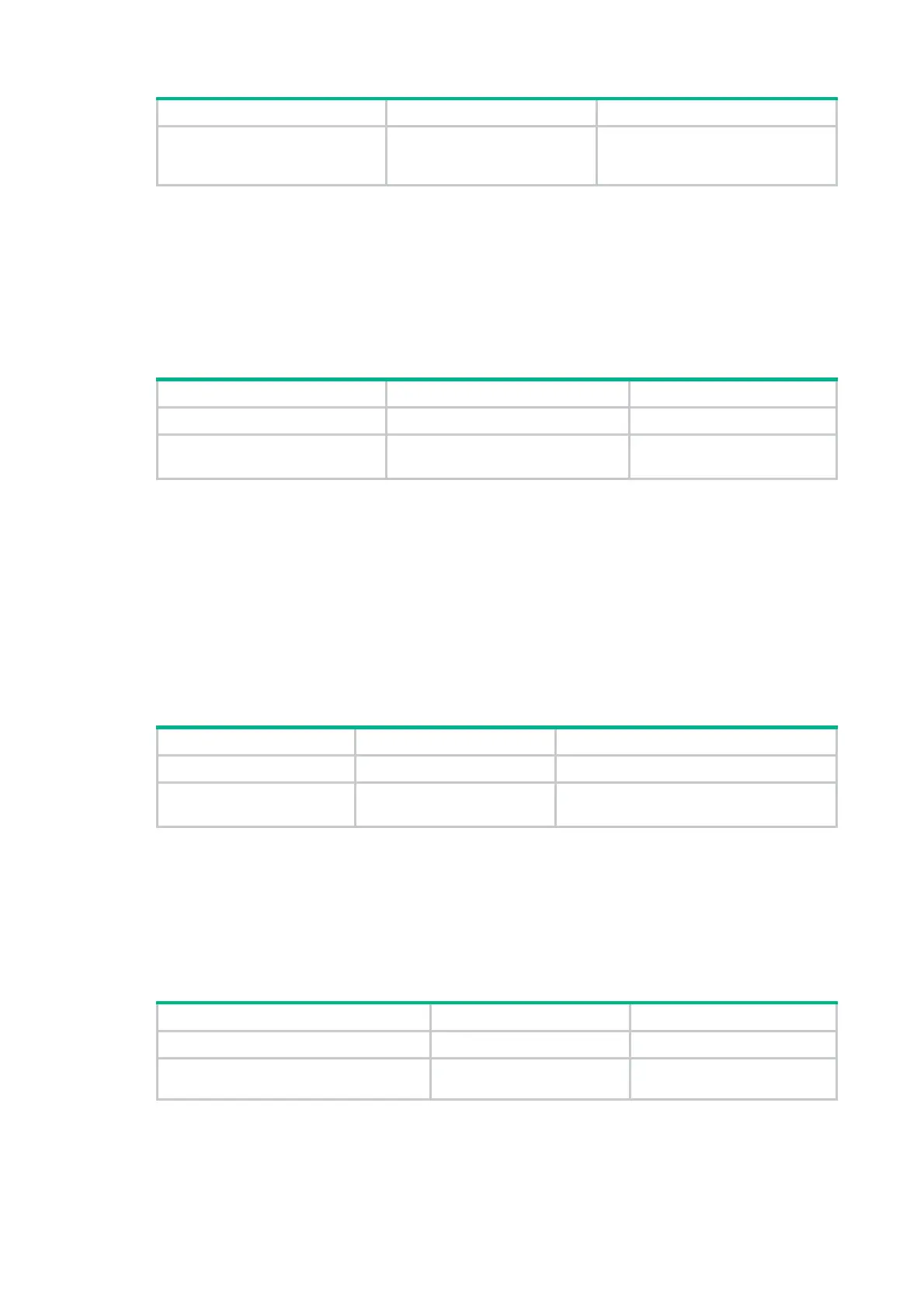238
Step Command Remarks
MSR3012/3024/3044/3064:
4096.
• MSR4060/4080: 4096.
Setting the aging timer for ND entries in stale state
ND entries in stale state have an aging timer. If an ND entry in stale state is not refreshed before the
timer expires, the ND entry changes to the delay state. If it is still not refreshed in 5 seconds, the ND
entry changes to the probe state, and the device sends an NS message three times. If no response
is received, the device deletes the ND entry.
To set the aging timer for ND entries in stale state:
Step Command Remarks
1. Enter system view.
system-view
N/A
2. Set the aging timer for ND
entries in stale state.
ipv6 neighbor stale-aging
aging-time
The default setting is 240
minutes.
Minimizing link-local ND entries
Perform this task to minimize link-local ND entries assigned to the driver. Link-local ND entries refer
to ND entries that contain link-local addresses.
By default, the device assigns all ND entries to the driver. With this feature enabled, the device does
not add newly learned link-local ND entries whose link local addresses are not the next hop of any
route into the driver. This saves driver resources.
This feature takes effect only on newly learned link-local ND entries.
To minimize link-local ND entries:
Step Command Remarks
1. Enter system view.
system-view
N/A
2. Minimize link-local ND
entries.
ipv6 neighbor link-local
minimize
By default, the device assigns all ND
entries to the driver.
Setting the hop limit
The device advertises the hop limit in RA messages. All RA message receivers use the advertised
value to fill in the Hop Limit field for IPv6 packets to be sent. To disable the device from advertising
the hop limit, use the ipv6 nd ra hop-limit unspecified command.
To set the hop limit:
Step Command Remarks
1. Enter system view.
system-view
N/A
2. Set the Hop Limit field in the IP
header.
ipv6 hop-limit
value The default setting is 64.

